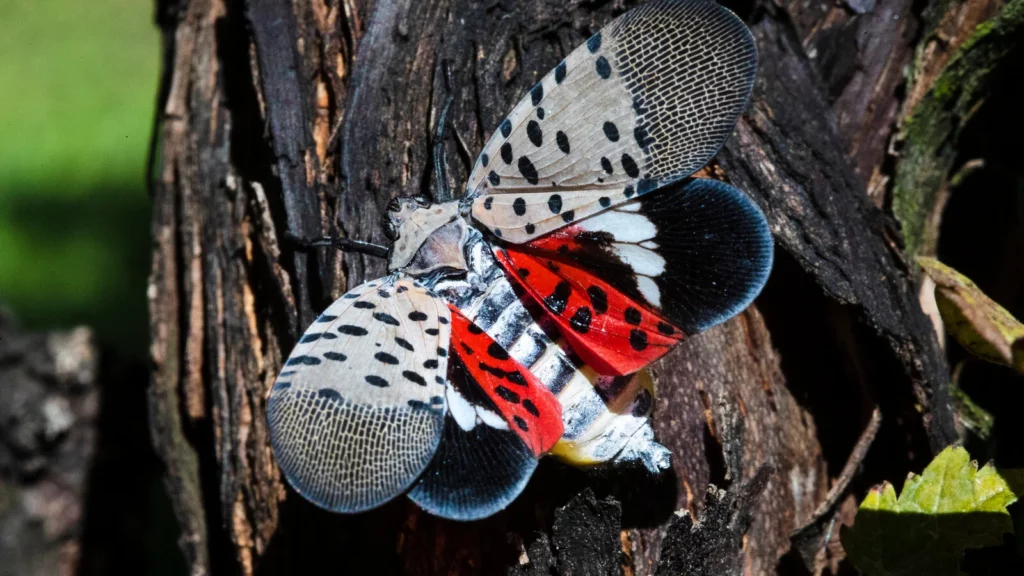A high school senior from New Jersey has garnered national attention by advancing to the final round of the Regeneron Science Talent Search with her groundbreaking solution to combat the invasive spotted lanternfly.
The spotted lanternfly, originally from China, has become a menace in 17 U.S. states, wreaking havoc on agriculture and costing billions of dollars annually in damages. These insects feed on plant sap, causing stress to trees and making them vulnerable to diseases. Moreover, their excretion of a sticky substance, dubbed honeydew, disrupts photosynthesis and fosters the growth of harmful mold.
“Everywhere it goes, it’s spreading disaster,” Zhang told Smithsonian Magazine. “With my comics, I wanted people to better understand this local invasive species and its behavior.”
Selina Zhang, an 18-year-old innovator from Annandale, New Jersey, devised a solution named the “ArTreeficial” trap. Drawing inspiration from her surroundings, Zhang repurposed a parasol from her family’s patio to construct the trap, demonstrating a commitment to sustainability and resourcefulness.

She then crafted incense from the lanternfly’s preferred tree, the tree of heaven, to attract the pests, a crucial detail that underscores her attention to the intricacies of insect behavior.
“As I got older, I wanted to take concrete action,” says Zhang. “I wanted to build an innovative solution that took into account my personal perspective and existing research to target this bug in ways we haven’t before.”
Zhang’s journey to creating the ArTreeficial trap involved meticulous observation and experimentation. She spent weeks studying the behavior of lanternflies, learning their feeding patterns and preferences.
“The main component of conducting the field observation was to get a better idea of who the enemy is. If I don’t understand how they behave, I can’t make an effective enough trap,” says Zhang.
Through extensive field research and the use of deep-learning algorithms, Zhang programmed the trap to detect and zap the insects upon landing, amassing over 500 close-up photographs to inform her design.

“I didn’t want to just rely on internet pictures, which are often designed to focus on specific aspects of the spotted lanternfly, such as its vibrant red wings, or clusters of them together,” told Smithsonian Magazine. “Part of making a good A.I. model is having good data to train it with. My field observations and pictures give the model a more comprehensive understanding of what it might encounter.”
The ArTreeficial trap boasts a double-layer electric mesh, reminiscent of a chessboard, which delivers targeted shocks to the lanternflies. Zhang’s innovative approach combines elements of artificial intelligence, chemistry, and solar power, paving the way for a sustainable solution to the invasive species problem. With a production cost just under $200, Zhang envisions large-scale adoption of her invention, potentially revolutionizing pest control practices.
“I would love to develop ArTreeficial as a general paradigm, not just for spotted lanternflies, but as a general approach that we can use toward technologies in pest control,” says Zhang.
Selina Zhang’s achievement has not gone unnoticed. Maya Ajmera, president and CEO of the Society for Science, hailed Zhang’s project as an exemplary demonstration of interdisciplinary science and engineering.

With plans to refine her invention further and explore new avenues for improvement, Zhang’s dedication to addressing environmental challenges underscores the potential of young innovators to effect positive change. Zhang’s multifaceted talents extend beyond science, as she is also an award-winning violinist who has performed solo at New York’s Carnegie Hall, showcasing her remarkable breadth of accomplishments.
“I want to demonstrate that we can use artificial resources as an essential tool for how we help protect our nature resources, especially in agriculture,” says Zhang. “As humans, it’s our responsibility to protect what we have and cultivate these resources responsibly to make sure that they’re here for us to enjoy, as well as generations after us.”
In the battle against invasive species, Selina Zhang’s ArTreeficial trap offers a ray of hope. By harnessing the power of technology and innovation, Zhang exemplifies the transformative impact that youthful ingenuity can have on pressing environmental issues.
As she continues to refine her invention, Zhang’s vision of a greener, more sustainable future inches closer to reality. With her blend of scientific acumen, creativity, and dedication, Zhang stands as a testament to the potential of young minds to shape a better world.









